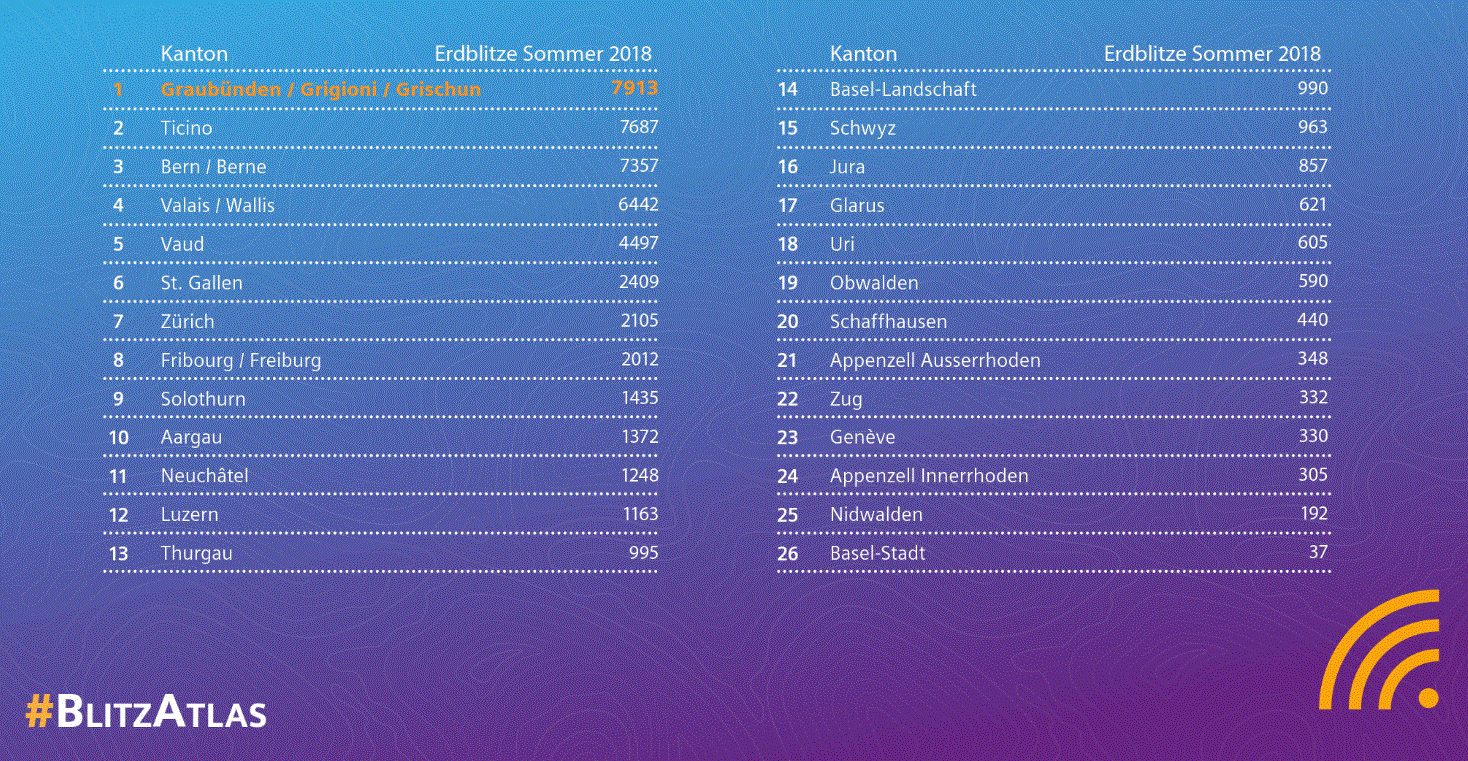Where lightning strikes most often
For the summer months of 2018, the Lightning Information Service registered 53,430 strikes in Switzerland. With 22.83 lightning bolts per km2, the greatest density was in the municipality of Rivaz VD. One of the cantons with the highest number of lightning strikes is Graubünden.

The lightning information service (BLIDS) by Siemens has just published the data of ground lightning for the summer of 2018 in Switzerland. This includes only Flashes, which occur between the lower part of a cloud and the ground. According to BLIDS, the highest number of lightning strikes in the three summer months of June to August 2018 - in terms of area - occurred in the municipality of Rivaz in the canton of Vaud. Here, 22.83 lightning strikes per km were registered.2.
Most radio discharges in Graubünden
The town with the most lightning in German-speaking Switzerland is Titterten in the canton of Basel-Land with 6.1 flashes per km2. In over 140 Swiss localities, on the other hand, no lightning strikes were recorded last summer, according to the data. Looking at the absolute figures at cantonal level, the canton of Graubünden recorded the most lightning strikes with 7913, followed by the canton of Ticino (7687) and the canton of Bern (7357). In the canton of Basel-Stadt, there were only 37 lightning strikes in the same period. By comparison, in the Ticino town of Lavertezzo alone, there were 361 lightning strikes in three months.
The more precise and faster the higher the protection
The high accuracy of BLIDS is based on the time-of-arrival (TOA) principle. The lightning location is calculated from the difference in the times recorded in the receivers, he said. "Whereas it used to take up to 30 seconds for information about a lightning strike to be retrievable in the system, today it takes only ten," explains Stephan Thern, head of the Lightning Information Service. "Today, we can pinpoint about half of the lightning strikes to within less than 100 meters." In addition to precise localization, he says, this method of measurement and calculation also makes it possible to identify polarity and current strength as well as partial flashes within an overall flash. The more precise and faster the data, the greater the protection for people, industrial plants and infrastructure. The information service is used by weather services, insurance companies, and industrial and power companies, among others. Thanks to MindSphere, the cloud-based, open operating system for the Internet of Things, the lightning data is also available to customers on PCs and mobile devices.
How the BLIDS system works
Every flash of lightning emits an electromagnetic signal, or electromagnetic waves. This information is registered with antennas and analyzed at the BLIDS headquarters in Karlsruhe. The antennas are designed in such a way that they can detect from which direction the signal is coming, Siemens writes. In combination with the information from other antennas, it is possible to determine the point of impact, it says. The course of a thunderstorm can thus be displayed without gaps.
The Lightning Information Service uses about 160 connected measuring stations in Europe to record lightning and manages the measuring network in Switzerland, Germany, Great Britain, Benelux, Czech Republic, Slovakia and Hungary. With the free BLIDS Spy interested parties can also find out about lightning strikes in Switzerland.









